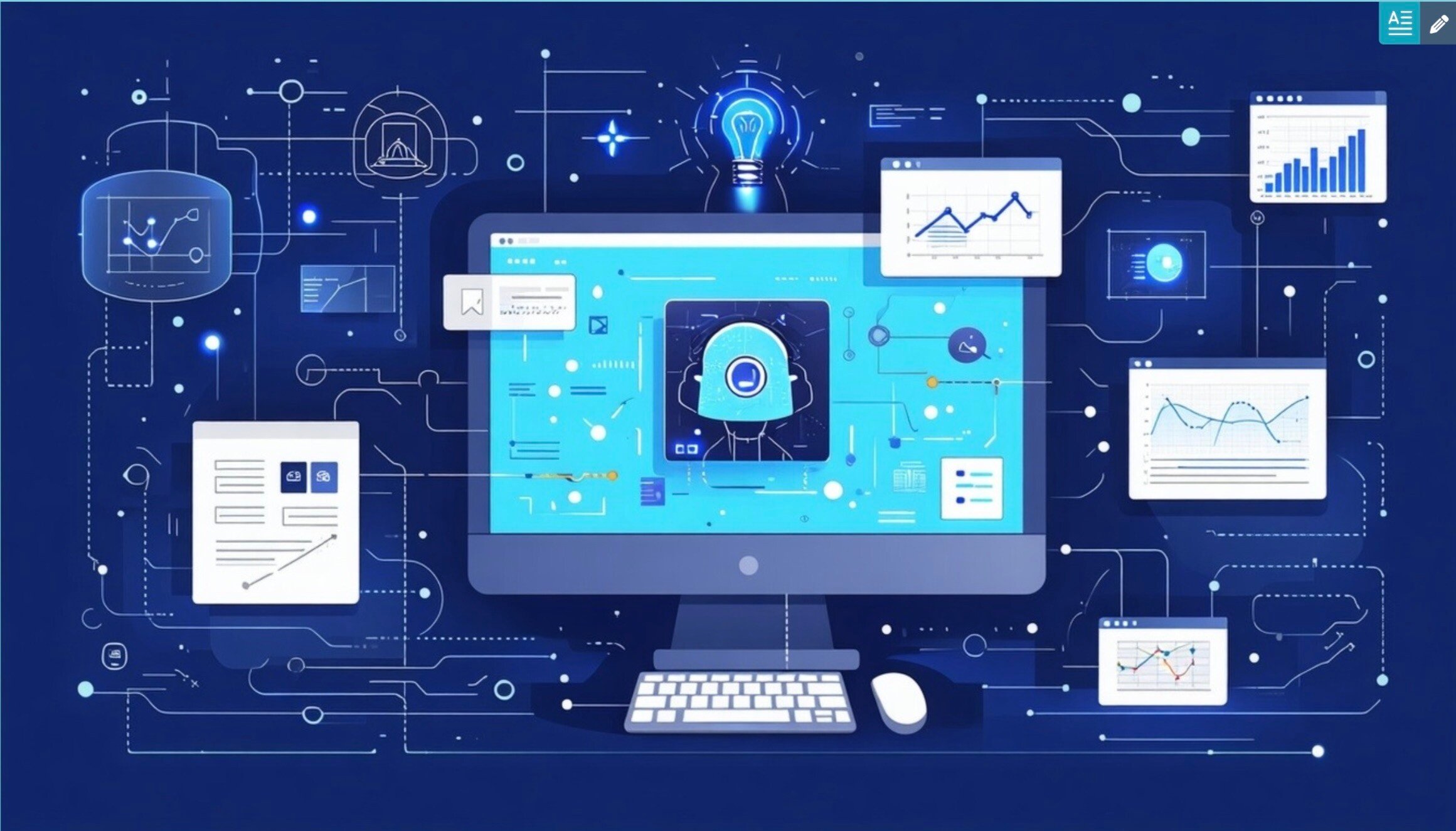
AI Marketing Tools for Effective Inbound and Outbound Strategies
Inbound vs Outbound Marketing: How AI is Transforming Both Strategies for IT, ITES, and SaaS
In today’s digital-first world, inbound vs outbound marketing is no longer a matter of choosing one over the other. IT, ITES, and SaaS companies are leveraging both strategies to build strong customer pipelines, drive conversions, and optimize marketing ROI. With the power of AI, businesses can now enhance both inbound and outbound marketing to reach the right audience at the right time.
What is Inbound Marketing?
Inbound marketing is all about attracting potential customers organically. It relies on creating valuable content, optimizing for search engines (SEO), and engaging prospects through email, social media, and webinars. Instead of interrupting potential customers with ads, inbound marketing nurtures them by offering helpful information that guides them through the buyer’s journey.
Examples of Inbound Marketing in IT, ITES, and SaaS
Many leading companies use inbound marketing to establish authority and attract users.
- HubSpot: Offers free educational content, CRM tools, and marketing automation features that help businesses improve their inbound strategy.
- Atlassian: Uses comprehensive documentation and community-driven resources to help developers adopt their software.
- Zendesk: Provides in-depth case studies and tutorials that showcase its product’s benefits while solving customer pain points.
How AI Enhances Inbound Marketing
With AI-driven tools, inbound and outbound marketing strategies are now more efficient and data-driven. Here’s how AI is transforming inbound marketing:
- AI-Powered Content Optimization: Tools like SurferSEO and Clearscope analyze search intent, helping SaaS businesses rank higher for relevant queries, including “inbound vs outbound marketing.”
- Conversational AI & Chatbots: Platforms like Drift and Intercom provide instant responses to website visitors, guiding them through the sales funnel and capturing leads.
- Personalized Email & Content Recommendations: AI tools like Adobe Sensei analyze user behavior to deliver tailored content that keeps prospects engaged.
- Predictive Lead Scoring: AI-powered CRM solutions such as HubSpot and Marketo evaluate potential customers based on their interactions and likelihood to convert.
What is Outbound Marketing?
Unlike inbound marketing, outbound marketing takes a proactive approach. It involves reaching out to potential customers through cold emails, telemarketing, paid ads, and direct sales. Although outbound marketing has been criticized for being interruptive, when done right—with AI-powered insights—it can be a highly effective strategy.
Examples of Outbound Marketing in IT, ITES, and SaaS
Top tech companies rely on outbound marketing to acquire high-value customers:
- Salesforce: Uses account-based marketing (ABM) strategies to engage enterprise clients through personalized outreach.
- Microsoft Azure: Leverages LinkedIn’s AI-driven ads to target IT decision-makers based on industry, job role, and company size.
- Oracle: Uses a combination of telemarketing and email campaigns to nurture and convert B2B leads.
How AI Enhances Outbound Marketing
AI is revolutionizing inbound and outbound marketing by making outbound efforts more precise and less intrusive:
- Hyper-Personalized Email Outreach: AI-powered tools like Seventh Sense and Phrasee optimize email subject lines, timing, and messaging to improve open rates.
- Automated Lead Prospecting: Platforms such as LinkedIn Sales Navigator and Apollo.io use AI to find and suggest high-value leads based on real-time data.
- AI-Driven Paid Advertising: Smart bidding algorithms from Google Ads and Meta Ads automatically optimize ad placements, reducing cost per acquisition.
- AI-Powered Sales Calls: Conversation intelligence tools like Gong and Chorus.ai analyze sales calls and provide insights to improve outbound outreach effectiveness.
Inbound vs Outbound Marketing: Which is Better?
Choosing between inbound vs outbound marketing depends on business goals, customer acquisition strategy, and budget.
- Inbound marketing is ideal for businesses looking to build long-term relationships, enhance brand authority, and reduce acquisition costs. However, it requires time to show results.
- Outbound marketing provides quicker lead generation and is effective for targeting high-value enterprise clients. However, it can be costly if not optimized properly.
The Future: AI-Powered Hybrid Marketing
The best approach for IT, ITES, and SaaS companies is to integrate inbound and outbound marketing into a seamless AI-driven strategy.
Examples of AI-Driven Hybrid Marketing
- HubSpot: Combines inbound marketing with AI-driven sales automation, ensuring sales teams engage with the most qualified leads.
- Salesforce: Uses AI-powered customer intent data to blend inbound nurturing with outbound prospecting.
- Marketo: Automates inbound lead nurturing and outbound sales engagement, ensuring a smooth customer journey.
Conclusion: How to Optimize Your Inbound and Outbound Marketing Strategy
To stay competitive in the IT, ITES, and SaaS industries, businesses must leverage AI to enhance both inbound and outbound marketing efforts.
Traditional Inbound Marketing entailed running ads on Yellow Pages or Magazines with the expectation that customers find the content useful and reach back. There was no way to measure the interaction/s and nuance the marketers response
Modern digital marketing has evolved from a one-way broadcast (like Yellow Pages or magazine ads) into a highly interactive, data-driven approach. Today, marketers can track engagement in real time, personalize content based on user behavior, and optimize campaigns across multiple channels—SEO, social media, paid ads, and email.
With the advent of AI content generated can be assessed for reaction using methods such as lead scoring. Buying intent can be gauged and further messaging nuanced basis the same
Modern outbound tactics, such as AI-powered personalized emails, drive significantly higher engagement and conversion rates. Advanced CRM tools provide real-time insights into email performance, allowing marketers to track open rates, click-through rates, and meeting bookings. This data-driven approach enables continuous optimization, ensuring more effective outreach and higher ROI.
With AI’s ability to predict user intent, personalize outreach, and automate marketing workflows, businesses can create a data-driven, omnichannel marketing strategy that generates sustainable growth. Instead of choosing between inbound vs outbound marketing, the smartest strategy is to combine both and optimize with AI.
What are your thoughts? Have you incorporated AI-driven strategies into your marketing and sales initiatives? Feel free to share your insights or comment if you find this valuable.


